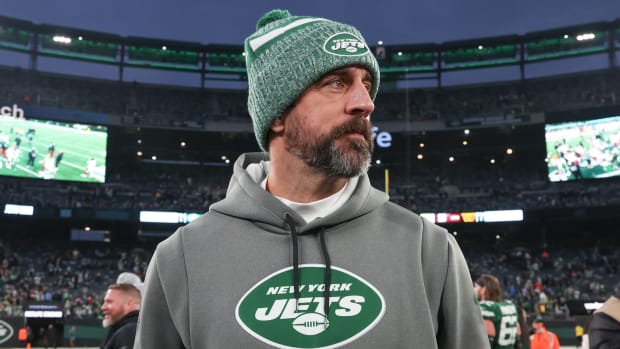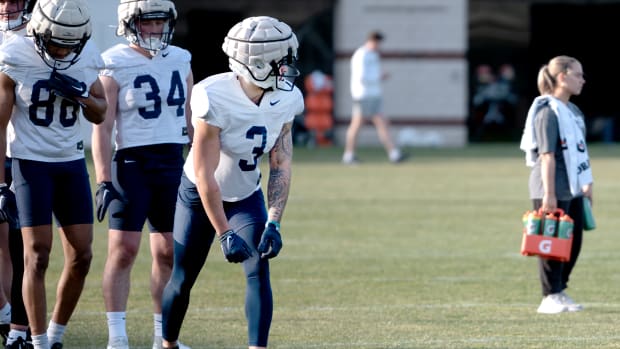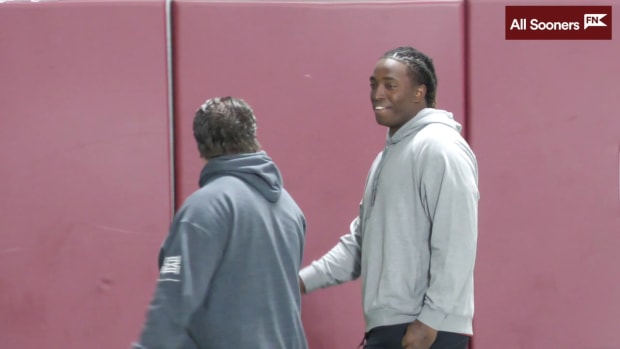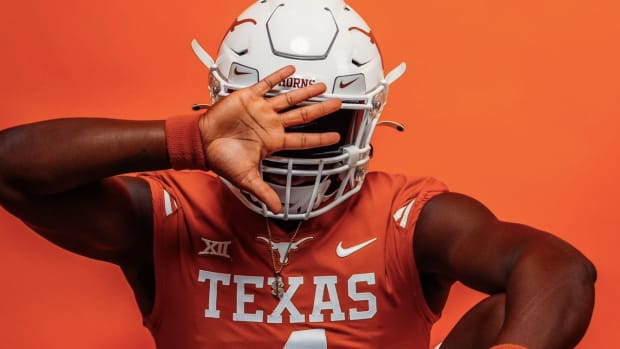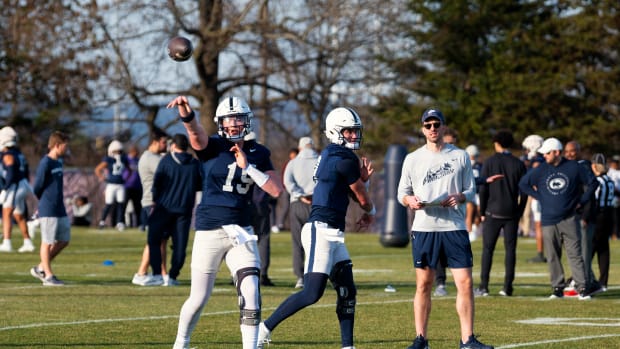Maybe There Was More to LSU's Cramping Issues vs. Texas Than Just Dehydration
If you were one of the millions watching the top 10 matchup between Texas and LSU on Saturday night, you were probably thinking a lot of things. Maybe it was, “Man, it’s 100 degrees for a 6:30 p.m. kickoff? I’m cool watching this one on TV.” Or maybe it was, “I didn’t realize this game was in Austin! I totally would have flown in for some breakfast tacos, triple digits be damned!” But most likely, at least once you wondered, “Why are so many players cramping up?”
LSU beat Texas in a dramatic, resume-building non-conference game in Week 2, 45-38. But on the way to victory, Tigers players went down 12 times (10 in the second half) with apparent muscle cramping issues or other injuries that required on-field visits from athletic trainers. It’s possible, especially for the Longhorns fans booing the players in person at Darrell K Royal Stadium and showing their disapproval on social media, to think LSU players were milking it. That they weren’t really injured or cramping and were installing some kind of delay tactic. The Longhorns ran 85 plays compared to the Tigers’ 68. Is it really that wacky of an idea to think a team would need a break in extreme heat?
We’re two weeks into the 2019 college football season, and dehydration and cramping have fast become headlines. After his team’s season-opening 36-31 loss to Boise State, Florida State coach Willie Taggart said he was looking into whether his players were properly hydrated after several cramped up in the game. In another top 15 matchup, Texas A&M players, including quarterback Kellen Mond, suffered from cramping in a 24-10 loss to No. 1 Clemson in Death Valley.
Can the amount of cramping seen these first two weeks simply be chalked up to extremely hot weather and dehydration? Perhaps, given that’s the logical answer. When the body loses fluids and salt, it can cramp up. But there are other factors to consider, too.
“Another type of cramp you get comes with anxiety,” says Jack Marucci, LSU’s head athletic trainer. “In the bigger games, your body can stress more and that could mean lack of sleep, that could mean if you’re tense, and you seem to see more cramping.”
The temperature at kickoff was 98 degrees at DKR according to official stats, though it was hotter on the artificial turf. On Monday, LSU coach Ed Orgeron told reporters that the visitors’ locker room didn’t have air conditioning. Texas athletic director Chris Del Conte quickly issued a statement saying Orgeron’s comments were the “first we’ve heard of any issues in that area” and “we’ve confirmed that our air conditioning in the visiting locker room is in good working order.” Either way, everyone can agree it was really hot in Austin on Saturday.
After Texas ran a 19-play, 86-yard drive that spanned 7:17 and ended with a touchdown, LSU safety Grant Delpit cramped up and was taken into the locker room for an IV. Marucci says Delpit doesn’t normally cramp and believes this was from muscle fatigue.
“We see it in different climates,” Marucci says. “You’re ramped up, you’re stressing and is that a fluid problem? No. That’s the misconception when you look at cramps. If you were potting plants all day, your fingers might cramp up at night because of overuse.”
Marucci remembers last year when LSU opened the season against Miami in the climate-controlled AT&T Stadium in Arlington, Texas, that cornerback Kristian Fulton got a cramp mid-game. He was playing in his first live game in more than a year after missing the entire 2017 season on suspension by the NCAA.
“He wasn’t dehydrated,” Marucci says. “It was his first game back. He was anxious. But I get it. [People] associate heat and cramping. … There’s enough research out there that shows what minerals need to be replaced [when you’re playing and sweating]. It’s not a secret how to hydrate throughout the week. The thing you can’t account for is stress, recovery, rest and nerves before a game.”
At LSU, Marucci’s support staff communicates with players throughout each game to monitor things like hydration, injuries, etc. There’s somebody assigned to look out for each position group. But he feels confident that in this particular game vs. the Longhorns, despite the amount of players who suffered from cramps, it wasn’t just due to heat. Marucci recalls games against Auburn last year and Florida two years ago being hotter and nobody got cramps.
“You can say all the games are big,” Marucci says. “But there is a difference when we play a higher ranked opponent. The stress is higher and effort burns more muscle tissue.”
Tom Herman on Monday was asked whether he thought the Tigers’ various injuries and cramps were legitimate. He said, “I have no idea.” Texas and LSU play the second leg of their home-and-home next fall in Baton Rouge on Sept. 12. It will be hot. It will be humid. It could very well be another top 10 (or at least top 25) battle. We’ll definitely be talking about this again.
